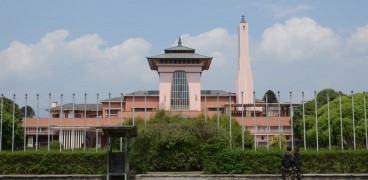The Jumla District is one of the ten districts that make up Nepal's Karnali province. The district's seat is Jumla, which covers 2,531 square kilometres (977 square miles) and had populations of 89,427 and 108,921 in the 2001 and 2011 national censuses, respectively.
Its area is between the longitudes of 810 28' and 820 18' East and the latitudes of 280 58' and 290 30' North. The Nepali language (formerly known as Khas) was developed in Jumla's Sinja Valley. Sinja was previously the capital of the Khas Kingdom, and the inhabitants still speak the "Khas Bhasa" dialect of that region.
History of Jumla District
Khasa Kingdom
During the 11th to 13th centuries, Jumla was a component of the Khasa kingdom. After the collapse of the Khasa Kingdom in the 13th century, the Karnali-Bheri area was split into Baise Rajya (22 principalities), one of which was the Kingdom of Jumla.
Kingdom of Jumla
Before King Prithvi Narayan Shah of Gorkha and his younger son Bahadur Shah reunited Nepal, the Jumla Kingdom was one of several kingdoms that dotted the country. The kingdom was formed in 1404 when Baliraja succeeded his father-in-law after marrying the daughter of the last monarch of the Yatse (Malla) Kingdom.
It was one of the most powerful kingdoms in western Nepal, one of the 22 Baise principalities of the Karnali area that were originally part of the greater Yatse Kingdom. In 1760, it annexed the kingdom of Mustang after decades of sporadic conflict.
The Jumla kingdom successfully defended itself against King Prithivi Narayan Shah's first invasion in the late 18th century. Legend has it that the king was injured in the conflict. In 1789, Bahadur Shah struck again with the aid of the countries around Jumla and annexed Jumla for the Gorkha rulers. The Jumla rulers, like the Gorkha kings, were Thakuris (Malla, Sijapati, and Shahi).
The Jumla Kingdom was one of Nepal's more expansive pre-unification kingdoms. Its territory stretched from Mustang in the east to present-day Uttarakhand, a state in modern-day India. The Kingdom of Nepal ceded to the East India Company after the partition of Nepal in 1816.
The Jumla monarchs were members of the Kalyal dynasty, which was related to the Rajasthani Mewar clan. Marriages have also taken place between the Jumla royal family and Nepal's Shah royal dynasty.
Things To Do While In Jumla District
Here are five things to do in Jumla during your stay.
- Visit Sinja Valley
- Tatopani
- Jumla Bazaar
- Scenic Beauty
- Witness Apple Gardens
Visit Sinja Valley
You should go to Sinja Valley since you will be able to witness beautiful scenery, hear people speaking Khas, see temples and old inscriptions, and meet and converse with locals in Jumla.
 Tatopani
Tatopani
After a long and tiring day, unwind by enjoying a warm and soothing bath at Tatopani, near Khalanga market. You may want to take as long as you like in the hot water bath to relax and revitalize yourself after a long day in the sun.
Jumla Bazaar
Being the district headquarters, the bazaar is well-equipped with adequate facilities like roads, electricity, many schools, an airport, and other large-scale homes. The temple of Chandannath, where you may see passionate musical aarati every morning and evening, is the bazaar's major attraction.
Scenic Beauty
Beautiful and fascinating scenery surround Jumla. As you wander through the streets of Jumla, you may obtain a clear view of Mt. Kanjirowa, see cultivable areas, and see greenery. You may witness the beautiful scenery of landscapes after walking for around 10-15 minutes.
Witness Apple Gardens
In terms of Apple production, Jumla takes first place in Nepal. You'll see apple gardens along the road because virtually every property has at least one apple tree.
Meanwhile, you may pay a visit to a factory that produces apple alcohol.
















